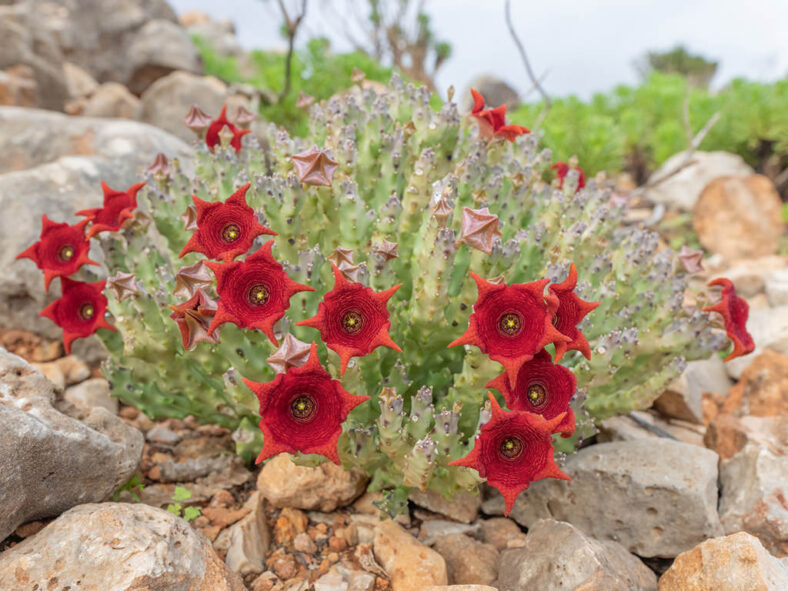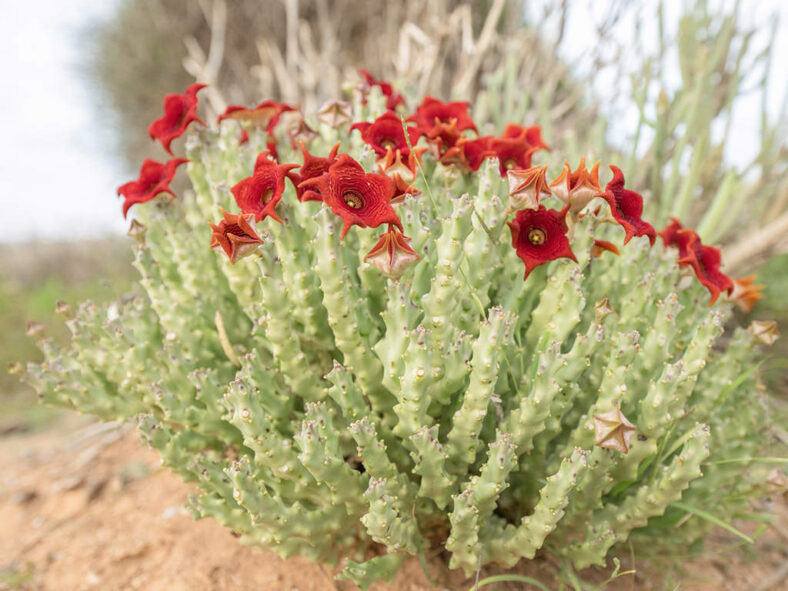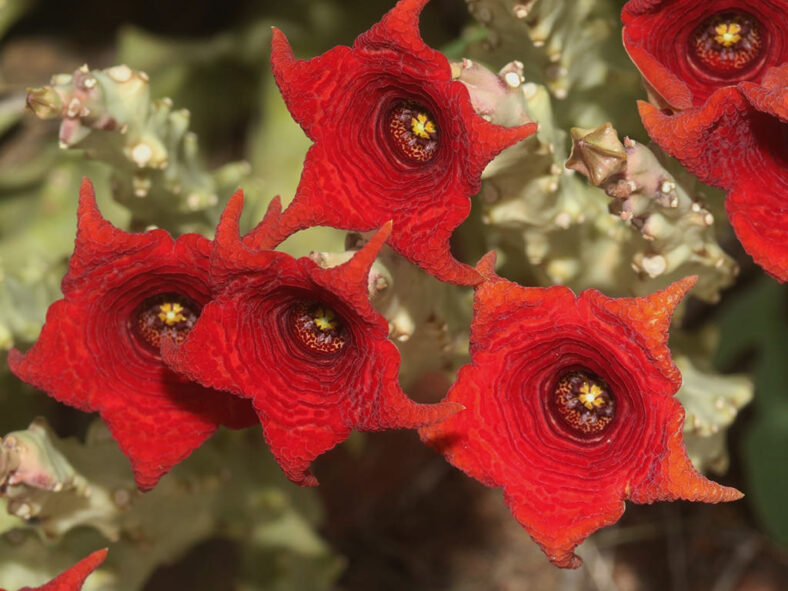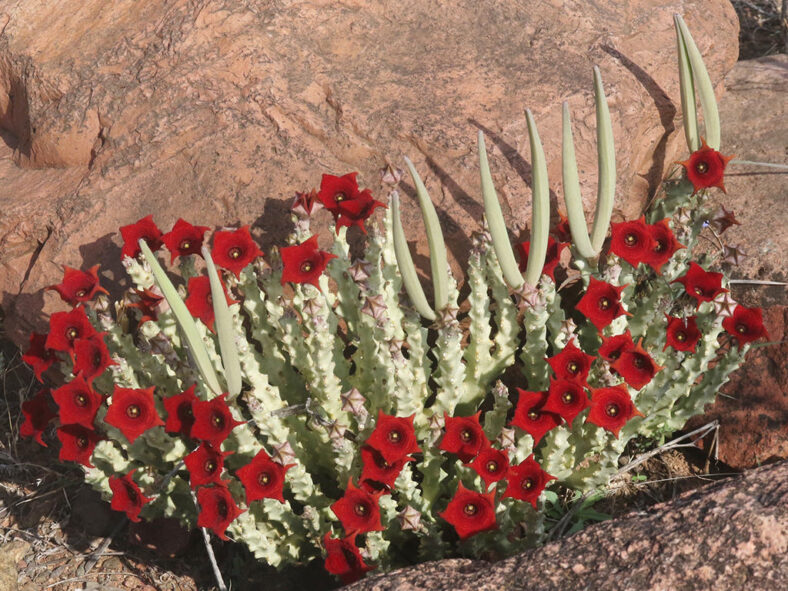Monolluma socotrana is a striking clump-forming succulent with stems that resemble bleached coral. In its native habitat, this species can be found with flowers almost any time, but the question is where to find one.
Scientific Name
Monolluma socotrana (Balf.f.) Meve & Liede
Synonym(s)
Boucerosia socotrana, Caralluma socotrana, Ceropegia socotrana, Sanguilluma socotrana
Scientific Classification
Family: Apocynaceae
Subfamily: Asclepiadoideae
Tribe: Ceropegieae
Subtribe: Stapeliinae
Genus: Monolluma
Etymology
The specific epithet "socotrana" (pronounced "so-koh-TRAY-nuh") refers to Socotra, where this species was first discovered.
Origin
Monolluma socotrana is native to Yemen (Socotra), Ethiopia, Somalia, and Kenya. It grows at elevations from 390 to 4,920 feet (120 to 1,500 m).
Description
Monolluma socotrana, formerly known as Caralluma socotrana, is a small succulent that forms dense clumps of whitish-green to bluish-green stems adorned with brownish-green or blackish-green tubercles. The clumps can reach a height of 12 inches (30 cm) and nearly equal diameter. The stems can grow as long as 6 inches (15 cm) and have a diameter of 0.4 inches (1 cm), branching from the base and above. The leaves are rudimentary and have a deltoid shape.
Typically in the fall, Monolluma socotrana produces star-shaped flowers with broadly triangular lobes and distinct sinuses between them. The flowers appear on a short stalk and can reach a diameter of 1.2 inches (3 cm). The corolla lobes are uniformly dark red, while the limb is vivid red or brownish-red with concentric, darker ridges. The bell-shaped tube is yellow with red or brownish dots, and the corona is dark purple-red. The fruits are pale green-yellow follicles spotted with purple. They contain papery seeds and can grow up to 4 inches (10 cm) long and have a diameter of 0.3 inches (0.8 cm).

How to Grow and Care for Monolluma socotrana
Light: Monolluma socotrana prefers full sun but will benefit from light shade during the hottest summer days. Indoors, place the plant near the brightest window of your home because it will stretch if it does not receive enough sunlight. Avoid abruptly moving a plant adapted to lower light levels to full sun to prevent sunburn.
Soil: Use commercial potting soil mix for succulents or prepare your own with 50% to 70% mineral grit, such as coarse sand, pumice, or perlite.
Temperature: The plant thrives in warm outdoor environments with low to moderate humidity. It does not like winter cold and should remain fairly dry and warm during its dormancy. Monolluma socotrana grows best in USDA Plant Hardiness Zones 10a to 11b, with average minimum winter temperatures ranging from 30°F to 50°F (-1.1°C to 10°C).
Watering: It has typical watering needs for a succulent. From spring to fall, during its growing season, water the plant thoroughly and allow the soil to dry between waterings. When it goes dormant in winter, it needs almost no water, about once a month.
Fertilizing: Fertilizing is a good idea to keep the plant healthy and thriving. Use a water-soluble fertilizer diluted to half the recommended strength, but only during the growing season.
Repotting: Repot Monolluma socotrana in spring, just before the growing season. It has shallow roots and does not require too much soil to grow. Always pick a container with drainage holes.
Propagation: The best way to propagate this succulent is by stem cuttings. To ensure good rooting, take cuttings during the growing season. The plant is also easy to start from seeds in spring.
Learn more at How to Grow and Care for Stapeliads.
Toxicity of Monolluma socotrana
Monolluma socotrana is non-toxic and safe to grow around kids and pets.
Links
- Back to genus Monolluma
- Succupedia: Browse succulents by Scientific Name, Common Name, Genus, Family, USDA Hardiness Zone, Origin, or cacti by Genus
Photo Gallery
Click on a photo to see a larger version.


